Kodiyum is a very beautiful decorative foliage plant. Despite the fact that codium is able to bloom, its aesthetic value lies precisely in the unusual leaves. The flower can be found under the names croton and codium.
The first name is erroneous because croton and codium are completely different plants. And "kodium" is a folk form from "kodiyum". There are several varieties of flower, you can choose “your” codium simply by photo, and since home care for different species is almost the same, you can purchase several plants at once, without fear of creating difficulties for yourself.
Content
Characteristics of the Kodium variety and species diversity
Codium is a shrub, herbaceous or woody perennial plant. At home, the flower grows to 1.5 m. The decorative value of the plant is represented by its leaves. Depending on the type of leaf plate may be in the form of an oval or blade.
All codium leaves are elastic and juicy. The surface of the plates is smooth, glossy, with pronounced veins. The color of the leaves is diverse, represented by a combination of several colors. Many species have leaves with wavy, often curled edges.
The main types of flower:
- Kodium Motley is the species from which all other hybrids used by indoor floriculture originated. Representatives of this species are distinguished by variegated leaves. The outside of the plate is dark green. It has bright yellow veins. The underside of the leaf may be green or dark red with a honey-colored vein.
- Kodium Petra is characterized by dark green oval leaves with light yellow wide veins. With age, the back of the plate takes on a reddish hue. A border of the same color appears on the outside of the sheet.
- Codyum Excellent has lobate leaves; their color depends on the age of the plate. Young have a light green color with prominent lemon veins. The old ones have a double color: the outer side of the olive tone with honey veins and the burgundy inner side with prominent light veins.
- Kodiyum Mammi - indescribably beautiful flower with spiral leaves. Fresh leaves have a bright green color. Over time, the plate changes its color to scarlet. The oldest leaves are maroon.
- Kodium Sunny Star has elongated leaves of unusual colors, which is expressed by a sharp transition of lemon and juicy green shades. Some plates have an equal amount of green and yellow, some only have specks or streaks of a certain color.
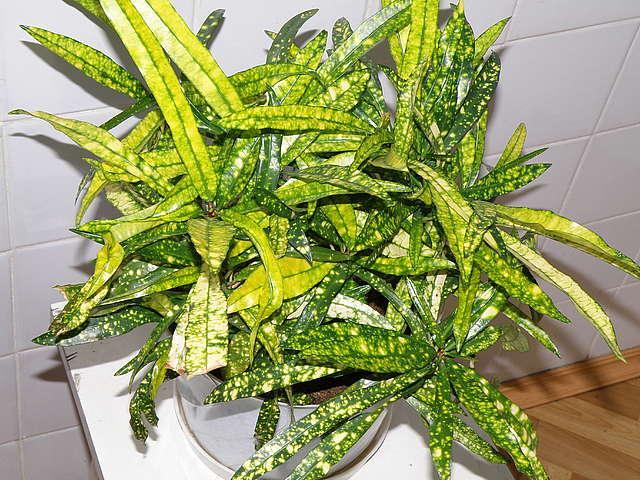
Codiyum Sunny Star - Kodium Mix has an indescribable color palette. The medium-sized oval leaves are painted in the most unimaginable colors. Among them there are combinations of lemon and bright green, pale lilac and burgundy, salad and dark green, olive brown and pale pink.
- Kodium Gold Sun has oval leaves. The outer side of the plates is painted in a juicy shade of green. A yellow speck is densely applied over the entire surface. On the reverse side, the color is paler.
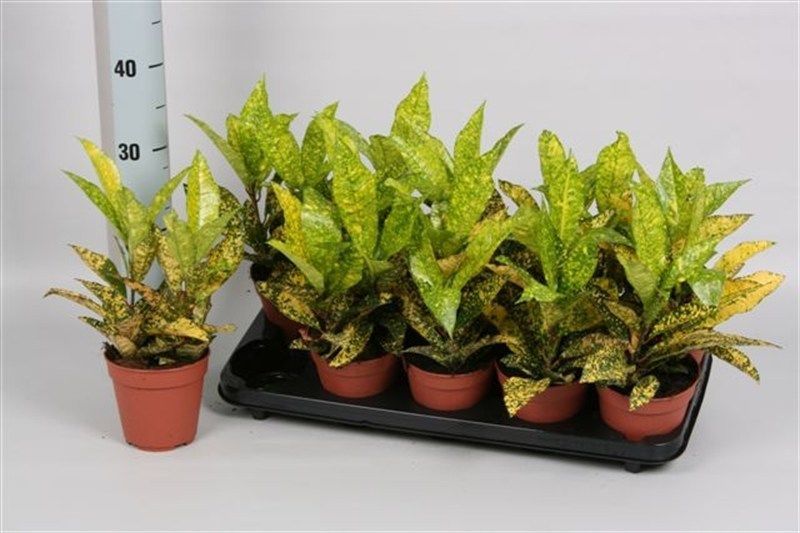
Codium Gold Sun - Kodium Tamara is represented by elongated leaves with a corrugated edge.The color of the plates is a sharp transitions of white and dark green hues. Looking at the flower, it seems that milk was spilled on it.
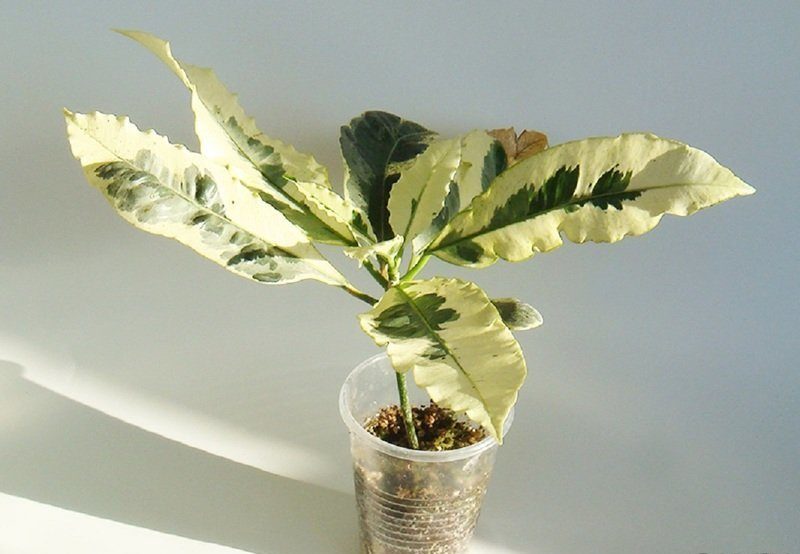
Kodiyum Tamara
Secrets and difficulties of caring for codium at home
Kodiyum is a very capricious and choosy plant. It is necessary to grow it only according to the established rules. Otherwise, the flower begins to lose its decorativeness and aesthetic value.
Basic care rules
The basic rules for the care of codium are presented in the table.
| Departure criterion | Recommendation |
|---|---|
| Lighting | The sun's rays in the morning and evening, at lunchtime - bright diffused light. |
| Air temperature | Vegetation - 20-22 ℃; rest period - not lower than 16 ℃. |
| Humidity level | High level of humidity (from 75%). |
| Watering | Moderate. Frequency - every other day. |
| Top dressing | From April to November - 2 times a month, the rest of the time - 1 time per month. It is recommended to use complex mineral fertilizers for decorative and deciduous plants. |
| Rest period | Winter. |
| Substrate | Sod land + leaf land + sand + humus in equal proportions. |
| Drainage | Expanded clay, fine crushed stone, broken brick. |
| Flower pot | Deep with drainage and a drain pan. |
Diseases and Pests
Codium is susceptible to attacks by scale insects, aphids and spider mites. An infected plant is treated with a solution of any insecticide, for example, "Thunder", "Grizzly bear", "Fly-eater". For heavily infected flowers, the treatment is repeated several times.
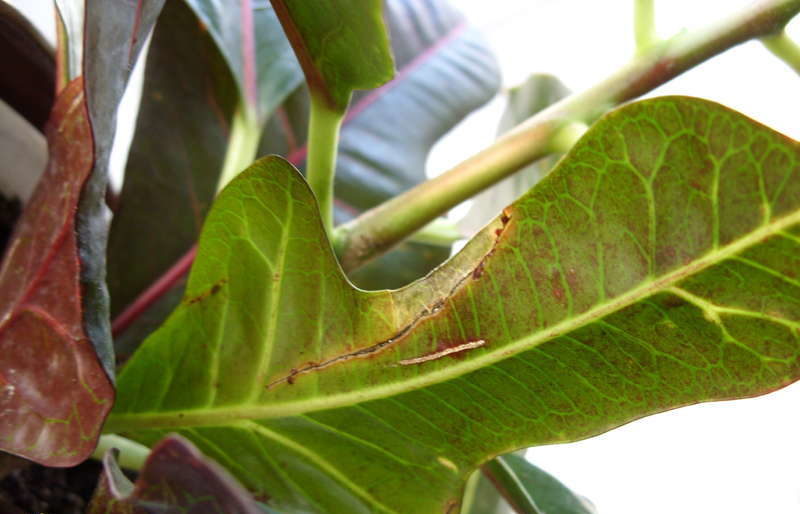
This flower signals its problems through the leaves. Drying tips indicate low humidity or room temperature. Wilted leaves will tell about waterlogging of the soil. If the air in the room is too dry, as often happens during the heating season, the flower may well lose all its leaves.
How to propagate and transplant a flower at home
Young plants require an annual transplant. Adult codeii are transplanted as the roots fill the space of the pot, but at least 1 time in 3 years. The transplantation is carried out by transshipment. The remaining voids in the pot are filled with fresh soil.
At home, a flower can be propagated in three ways:
- cuttings;
- seeds;
- layering.
Apical cuttings
You can get the codium from the handle in the following way:
- A large leaf is cut from the mother bush and placed for 1-2 hours in water (for draining the juice).
- Then the leaf is rooted in a peat-sand mixture (1: 1), the soil is abundantly moistened.
- A cap is placed over the handle (for this a cut-off bottle made of transparent plastic is suitable).
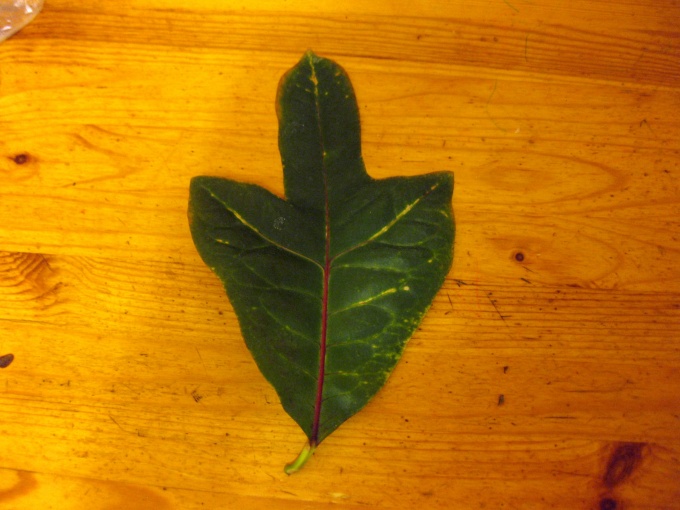
Daily, the stalk is moistened and aired for about half an hour. Rooting occurs after 1.5-2 months. As soon as the stalk releases a couple of young leaves, it is transplanted as an adult plant.
Layering and seeds
Some flower hybrids branch. Such species can be propagated by layering. For this, a lignified vine is pinned to the soil with a staple. The top of the vine should remain in the air. Top of the vine with a bracket sprinkled with soil. When transplanting, the rooted vine is cut off from the mother bush, planting it in the ground as an adult plant.
In order to remove codium from seeds, you must proceed as follows:
- Before planting, the seeds are soaked in a growth stimulator for a day.
- Then they are sown on a sand-peat mixture (1: 1). It is not necessary to bury the seeds.Just stamp them with your fingers.
- The soil with seeds is irrigated using a spray gun. The container is covered with a film.
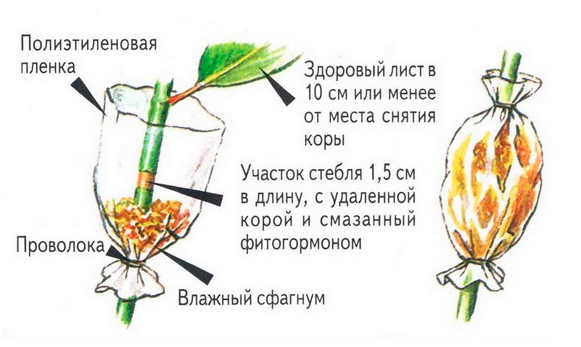
Caring for seedlings is similar to the care for rooting cuttings described above. The first shoots appear 3 weeks after sowing.
What is the danger of codium to humans?
If you do not take into account the omen about the blooming codium, promising misfortune, then the danger of the plant lies only in its toxicity. All parts of the flower are toxic. The juice of a plant is especially dangerous for human health and life.
When damaged, the plant releases toxic juice. Skin contact causes burns and contact dermatitis. When juice enters the stomach, a person experiences vomiting, diarrhea, and other symptoms of food poisoning.
You can only work with the code with gloves on. In no case should it be allowed to get codium juice on damaged areas of the skin (places of cuts, burrs, open wounds, trophic ulcers, etc.). Juice that enters the bloodstream causes a severe degree of intoxication of the body. If the victim is not delivered to the hospital on time, he may die.
From the above, we can conclude that you can keep a code house at home, but you need to do it wisely. Families in which small children or pets live should refuse to grow a flower.
History of flower growing and signs
Kodiyum is an ornamental-deciduous plant belonging to the family Euphorbiaceae. In the natural environment, the flower grows on the Pacific islands. Of the existing 17 species, indoor floriculture uses only Kodiyum Pestry and its hybrids. The remaining species are very finicky, and it is almost impossible to create conditions suitable for normal life.
There are many signs associated with the code. Most of them put a flower in a positive light:
- Kodiyum is a kind of guard of his home. The flower protects the house from the influence of negative energy, nullifies all attempts by ill-wishers to bring evil into the house.
- The flower helps to cope with indecision. He has a beneficial effect on his master, giving him determination, strength to make a difficult decision. Also, the plant returns its owner self-confidence.
- Codiyum helps creative individuals to tune in the right way. It also helps to unleash the full potential of the artist.
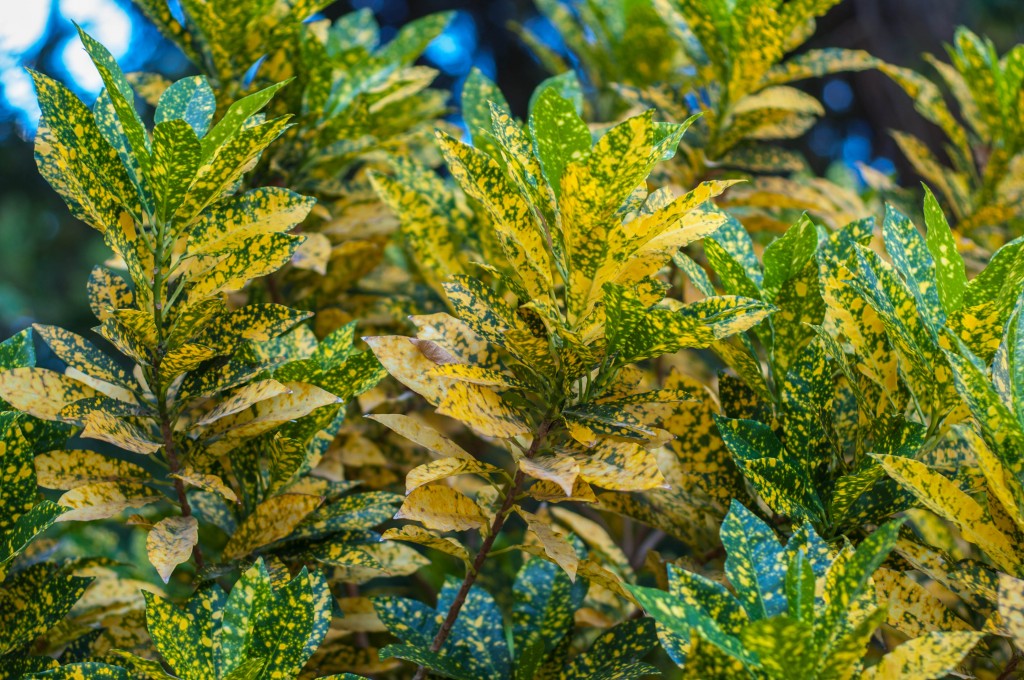
Kodiyum motley - The plant makes sanity, saving its inhabitants from rash and frivolous actions.
- A flower is able to establish relationships in the family, harmonize communication.
- The plant forms a kind of shell around its owner. Such a shell protects a person from diseases, leads away from dangers.
- Kodiyum promotes the development of eloquence in its master. It becomes easier for a person to communicate with other people, to establish contacts with them.
But the blooming codium is considered a bad omen. It bodes trouble and frustration.
Common Growing Questions
Kodium is a very beautiful, but difficult in terms of care, decorative-deciduous plant. The presence of poisonous juice makes the flower unsafe.

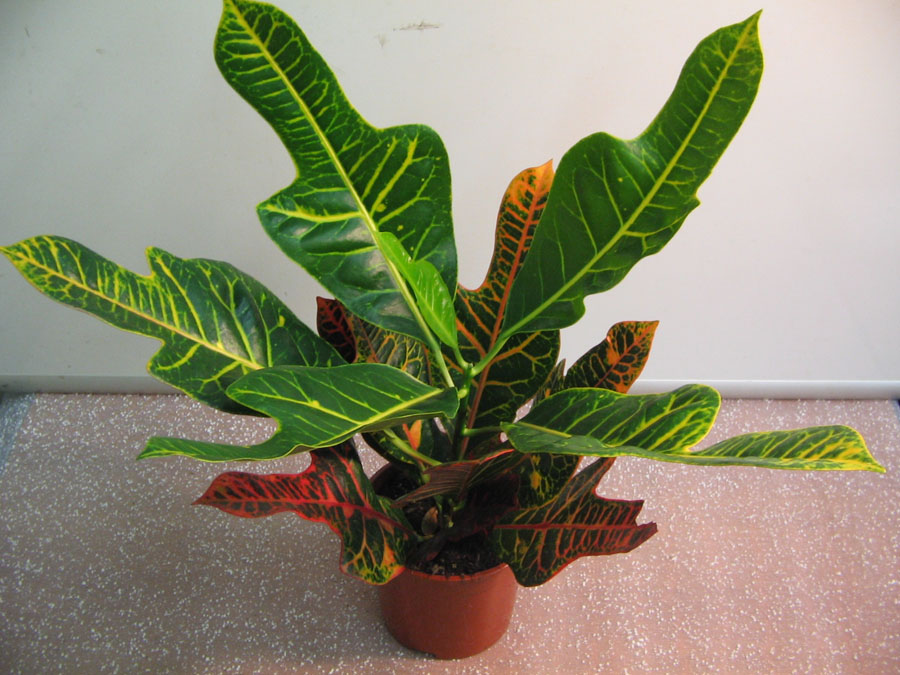

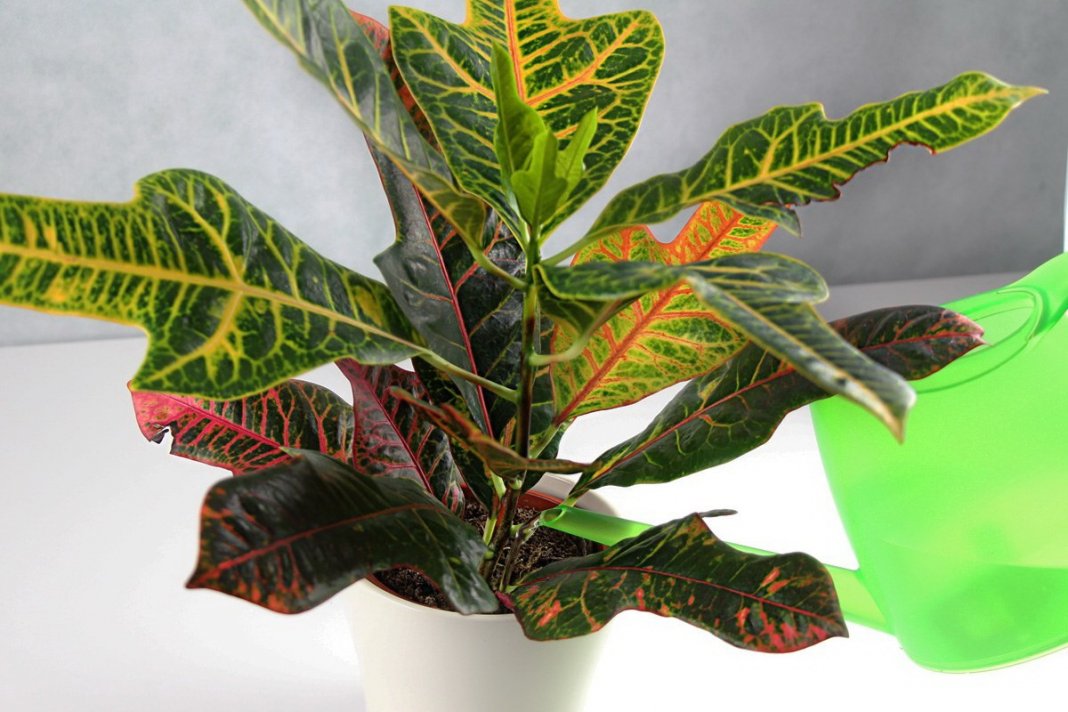
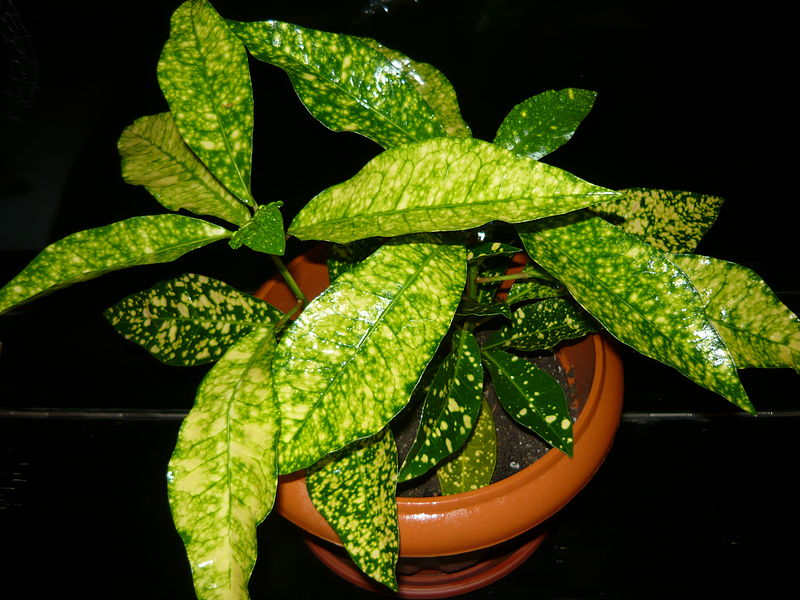
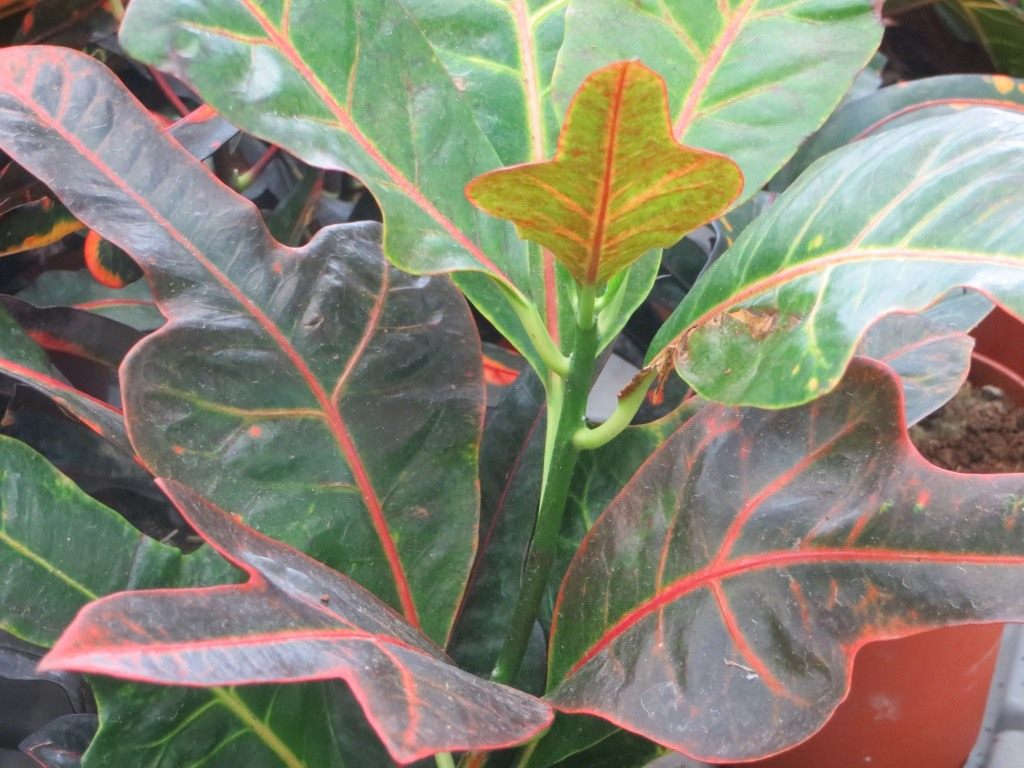
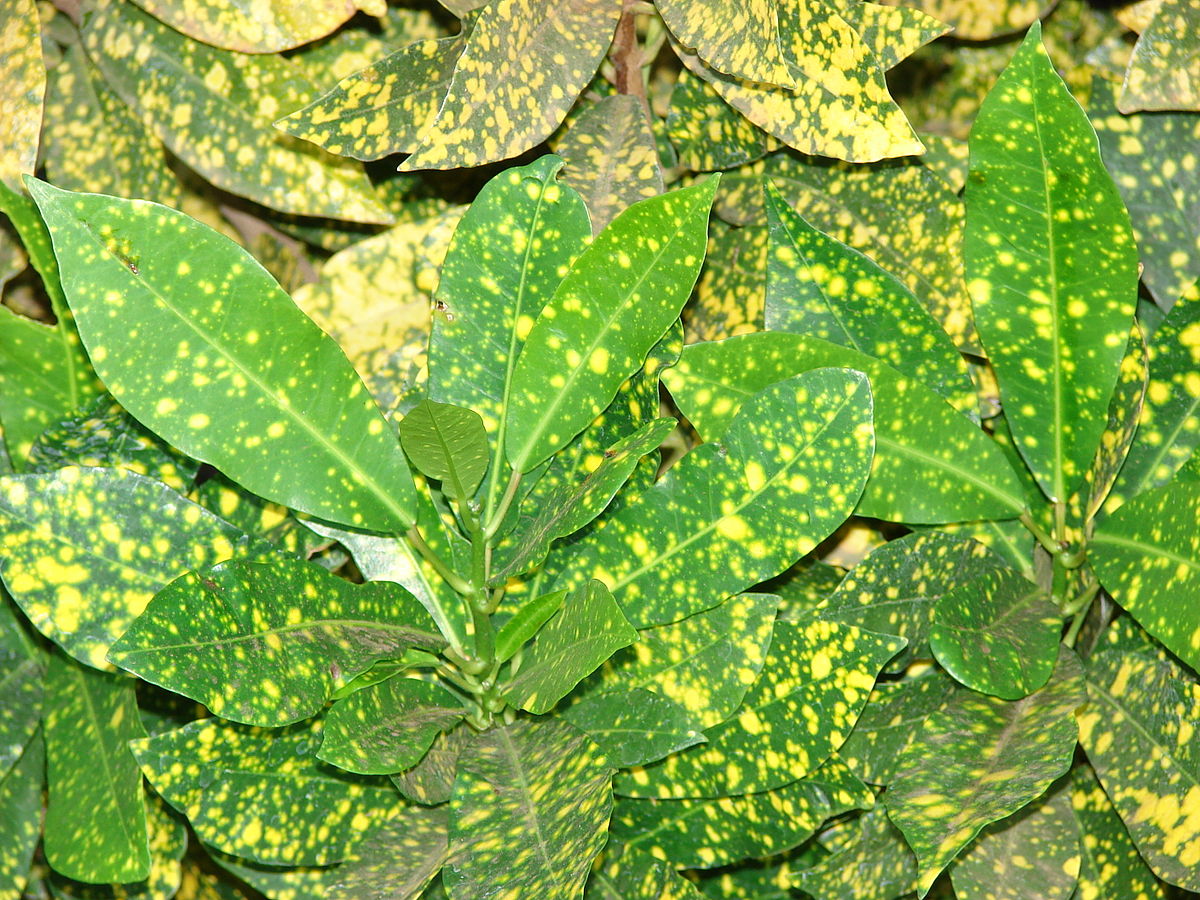

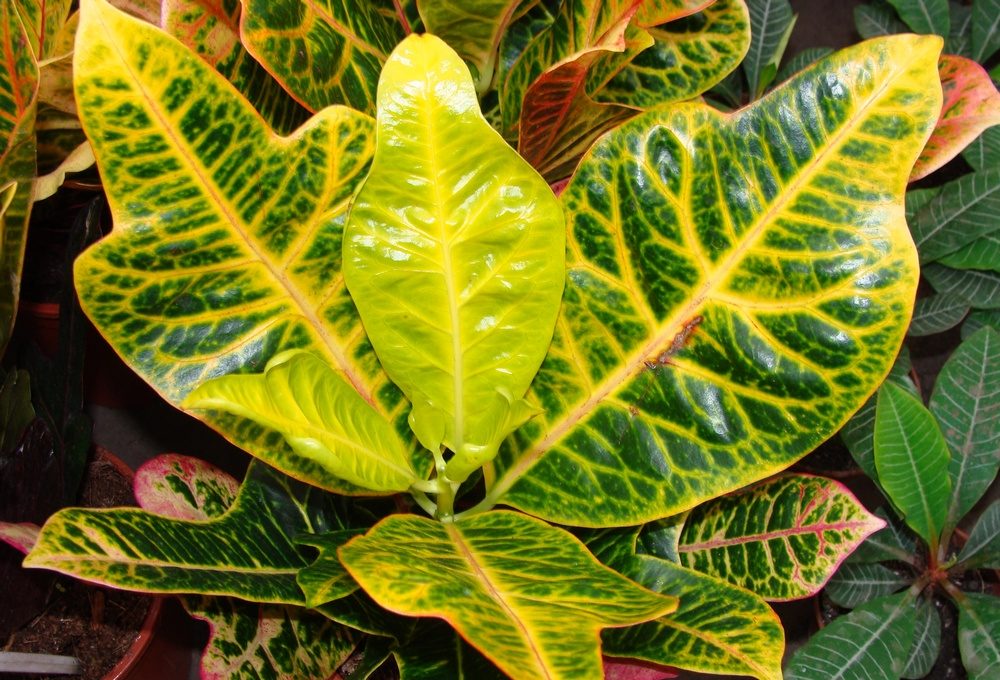
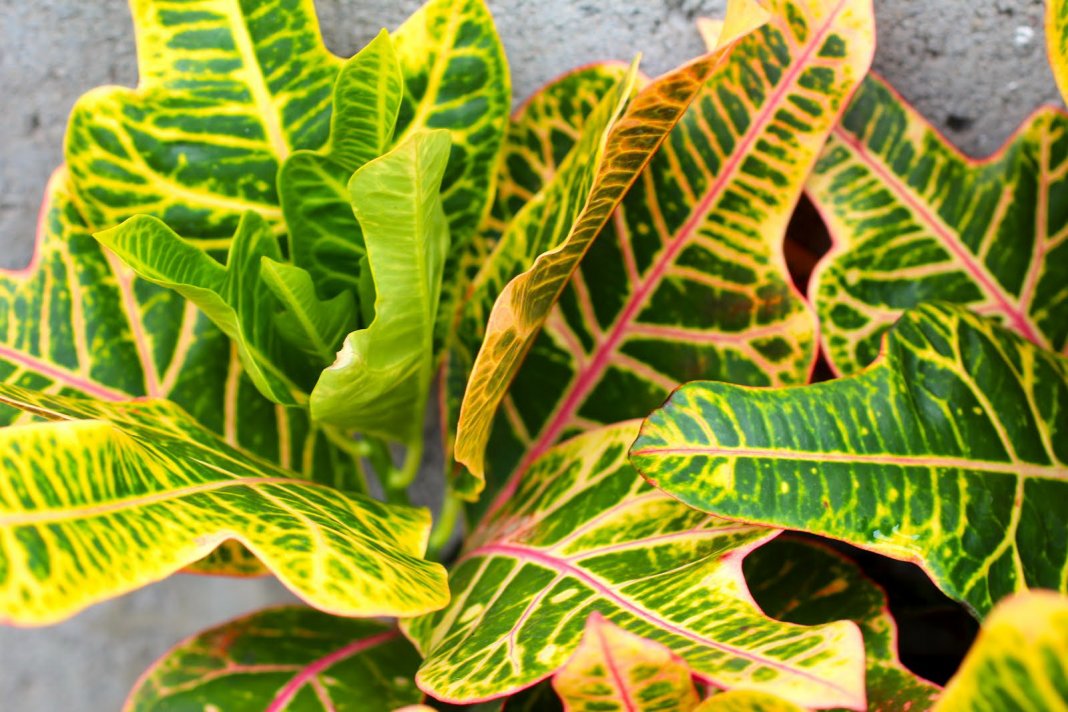
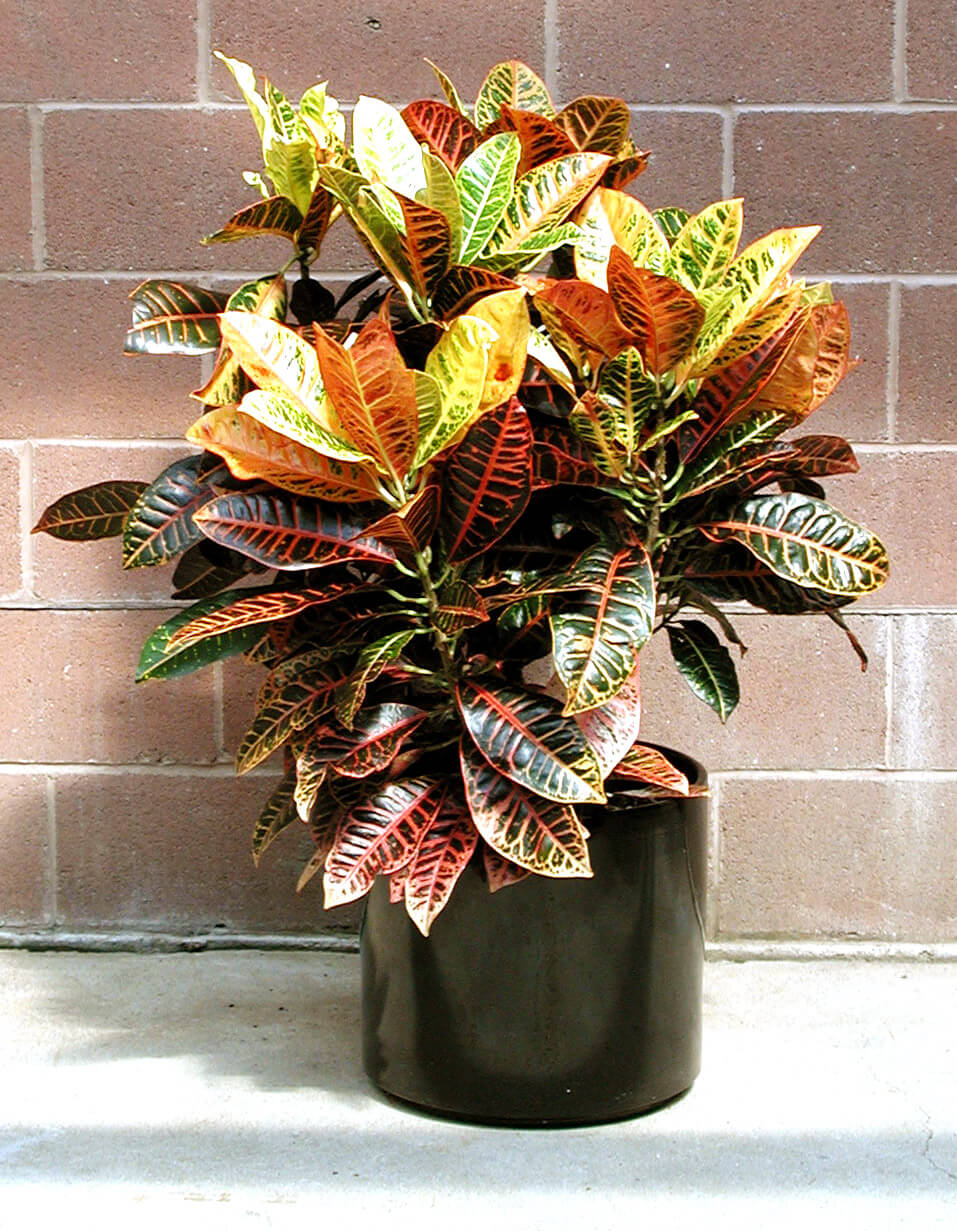

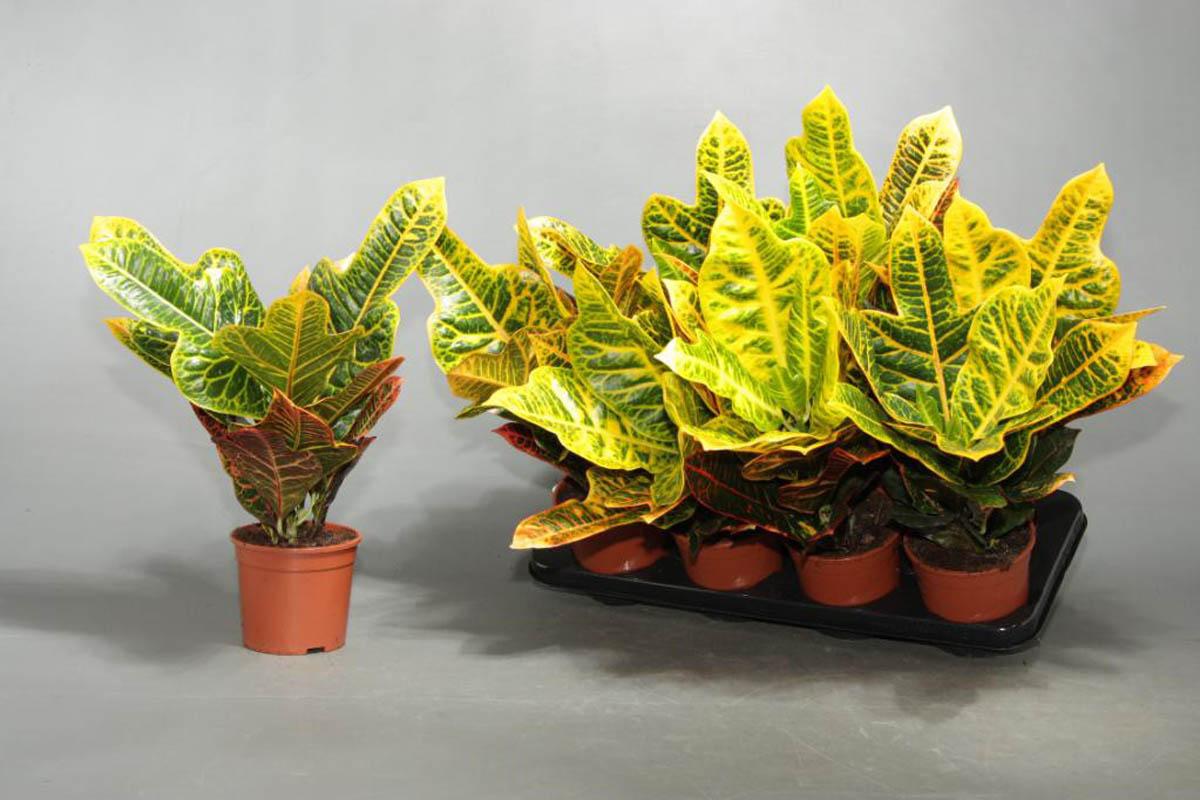

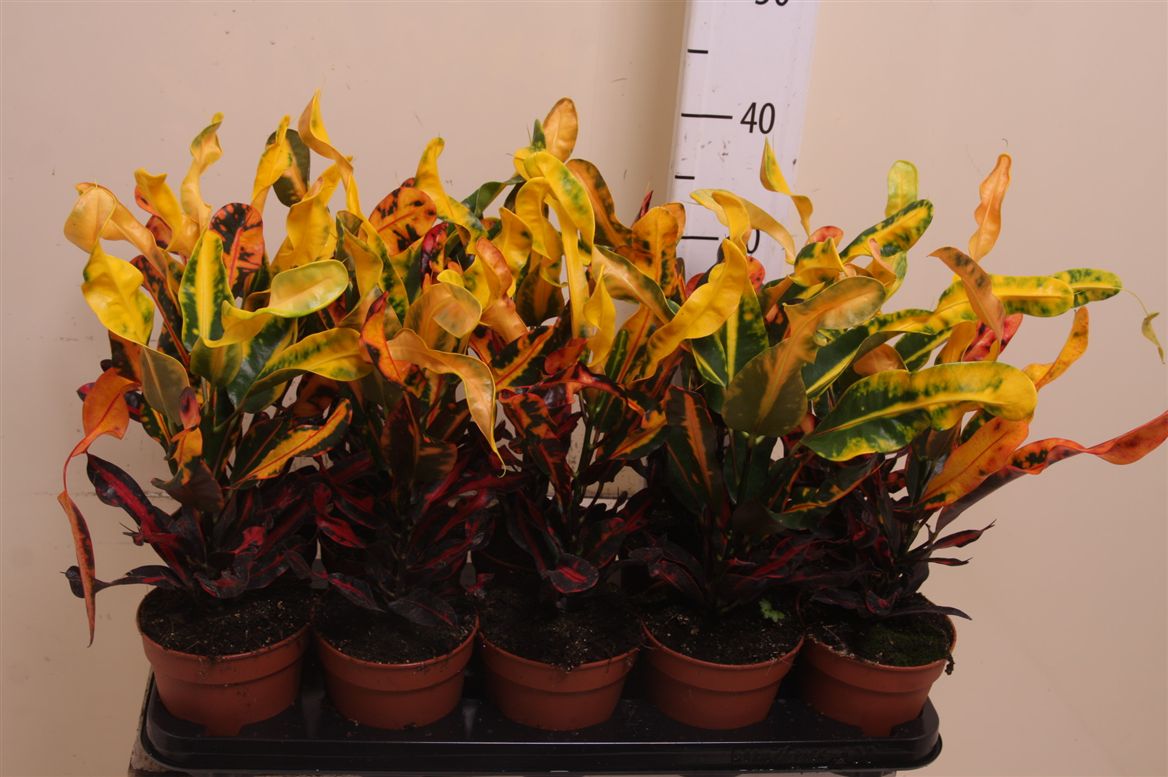


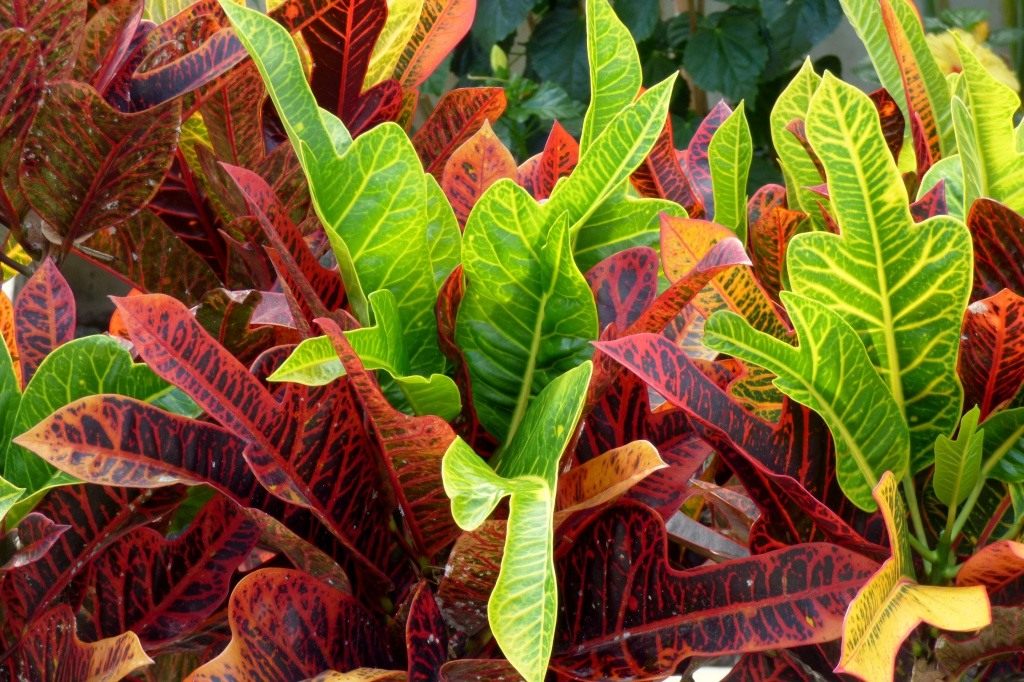



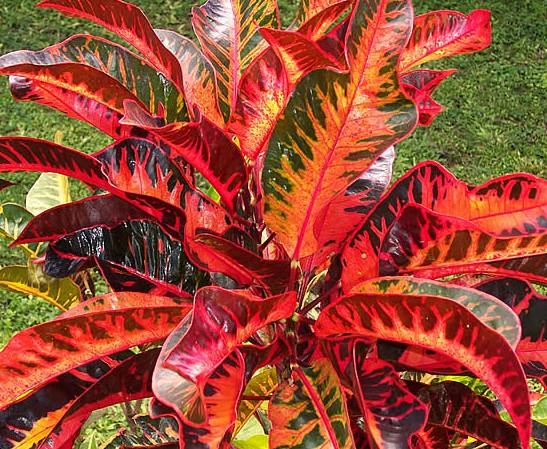
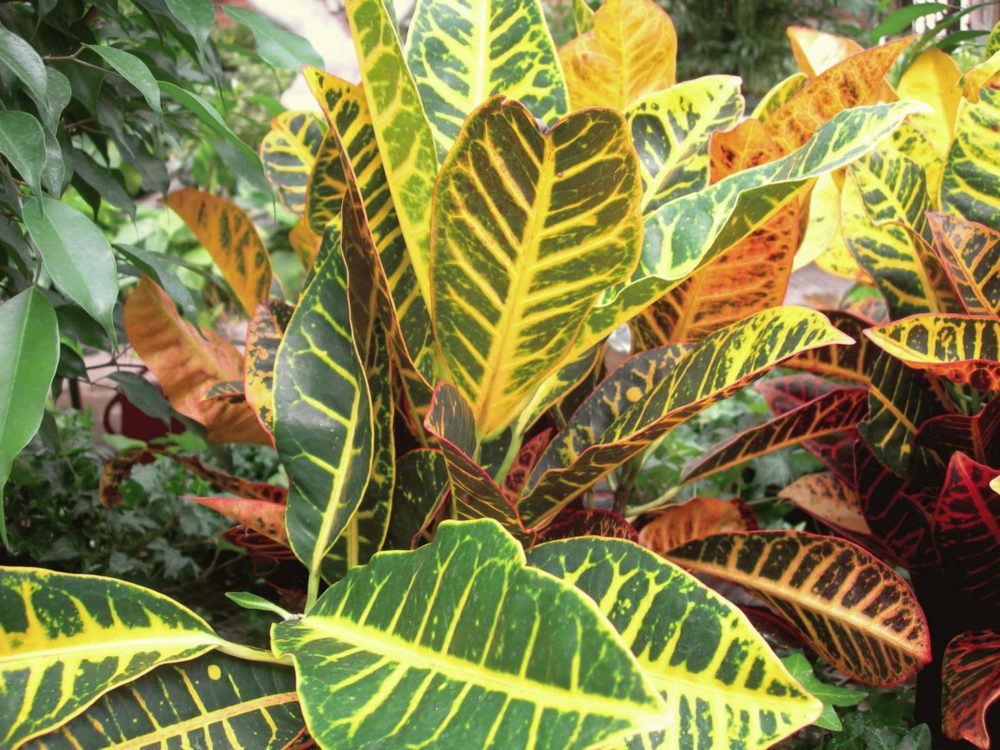
 Sow in the ground, without seedlings: 10 beautiful and unpretentious flowers
Sow in the ground, without seedlings: 10 beautiful and unpretentious flowers Platicodon planting and outdoor care
Platicodon planting and outdoor care Hosta - planting and care in the open ground in the Urals
Hosta - planting and care in the open ground in the Urals Oleander - care and growing at home
Oleander - care and growing at home